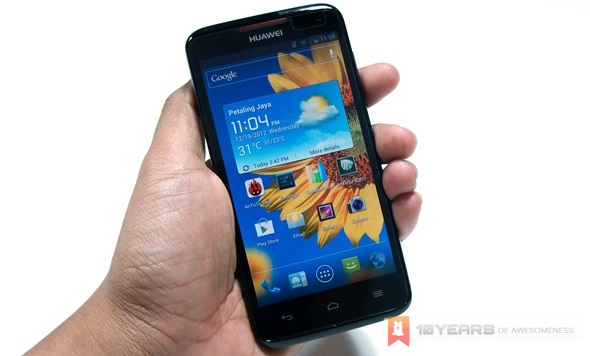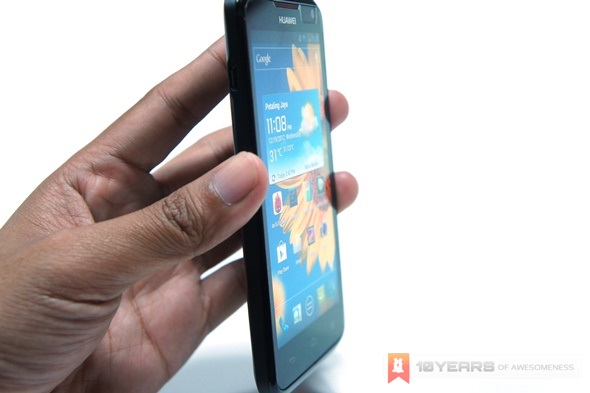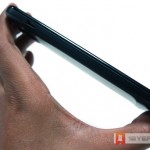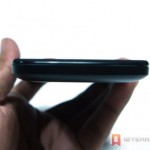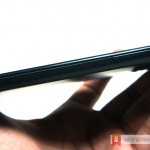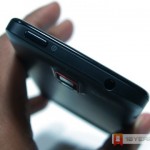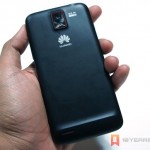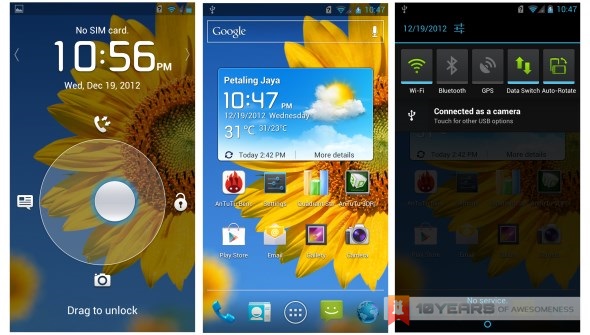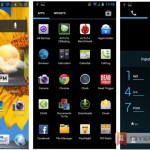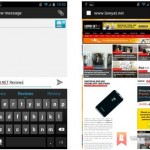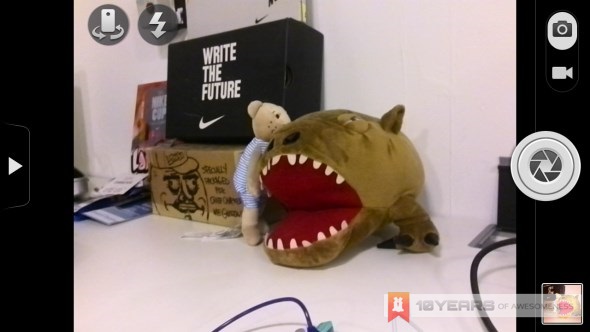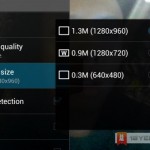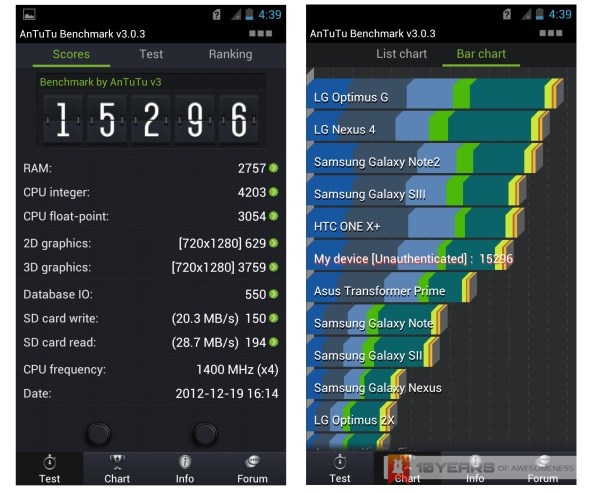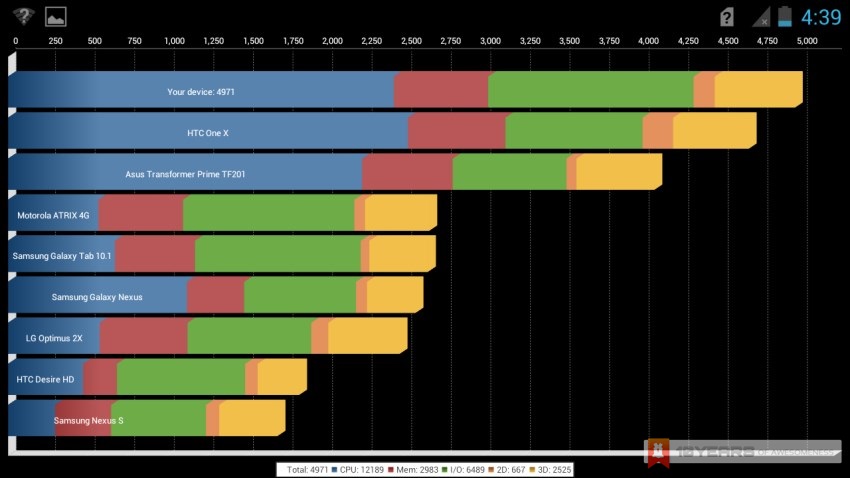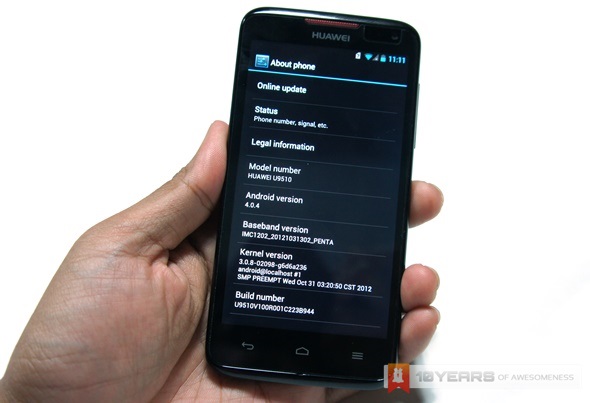Announced back at Mobile World Congress 2012 in Barcelona earlier this year, the Huawei Ascend D1 Quad is among the first device that is equipped with the quad-core Huawei K3V2 system-on-chip (SoC) processor. The processor managed to gather quite some attention at the event not only because it was developed in-house but also the fact that Huawei actually claimed that its processor performs better than NVIDIA Tegra 3.
The smartphone somehow takes quite some time to arrive in our market though but nevertheless, here it is. Thanks to Huawei Malaysia, we managed to get our hands on a unit ahead of its official launch this Friday.
With further ado, hit on the Read More link below to take a first look at the new Huawei Ascend D1 Quad.
TECHNICAL SPECIFICATIONS
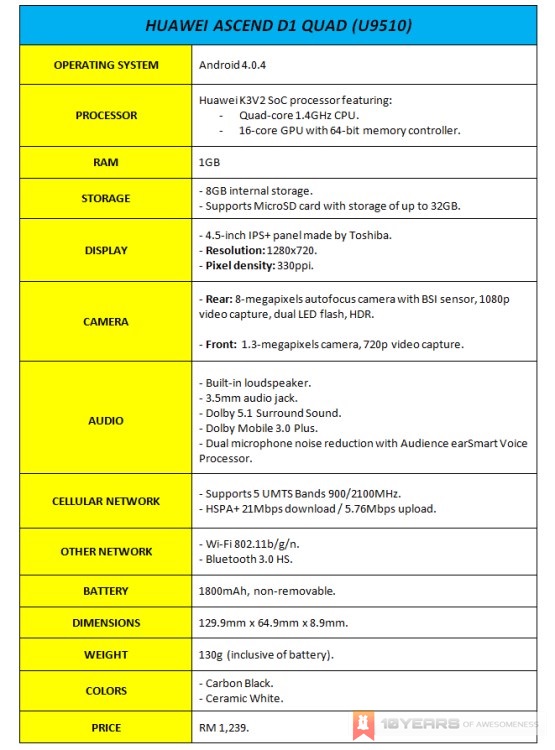 Huawei Ascend D1 Quad’s technical details.
Huawei Ascend D1 Quad’s technical details.
As you can see from the specification above, the CPU within the Huawei KV32 SoC processor inside the Ascend D1 Quad runs at 1.4GHz – just slightly slower than what Huawei originally announced at MWC’12 which was 1.5GHz. Other than that, there are no changes to the device’s specifications.
PHYSICAL DESIGN
While it might be slightly bigger than your average smartphone especially with its 4.5-inch display, the Huawei Ascend D1 Quad doesn’t feel bulky thanks to its body height of 8.9mm which is just 0.3mm thicker than Samsung Galaxy S3. The slightly rubberized back cover should be able to provide better comfort and grip when one holds the device. Interestingly, the Huawei Ascend D1 Quad’s back cover can be open to reveal its SIM card and MicroSD card slots but somehow, the device’s battery is non-removal.
Huawei chose to equip the Ascend D1 Quad with touch-based controls for its three main function buttons (back/exit, home/recent used apps and menu) which are illuminated when activated. Other than that, there is also the usual power switch and volume rocker but unfortunately, no dedicated button for camera.
USER INTERFACE
Interface-wise, the Huawei Ascend D1 Quad’s UI is clean and almost stock-like with the exception of several minor tweaks as well as the 3D Home mode which you can totally forgo if you prefer smoother no-frills experience. In general, the UI of the device is identical to the previously released Huawei Ascend P1.
PHOTOGRAPHY
The simplistic nature of the device is also extended to its camera. Built with an 8-megapixels rear camera and 1.2-megapixels front-facing camera, the smartphone doesn’t come with much fancy photography features other than the HDR capability for its main camera as well as several Instagram-like filters and comedy effects.
Sample Output
8-megapixels rear camera: outdoor with auto settings and flash off.
8-megapixels rear camera: indoor with auto settings and flash on.
[youtube width=”580″ height=”326″]MTL5BbhPB6g[/youtube]
8-megapixels rear camera: outdoor video capture with auto settings and full HD 1080p resolution.
1.3-megapixels front-facing camera: outdoor with auto settings
In AnTuTU Benchmark v3.0.3, our test unit managed to score 15296 which put it in between Asus Transformer Prime and HTC One X+ in the benchmark built-in chart (shown above). We also run the Huawei Ascend D1 Quad through another popular benchmark software called Quadrant in which the device scored 4971 – enough to overtake HTC One X in Quadrant’s built-in chart (shown below). Outside of the above benchmark software, we also found out that our test unit coping well with several other tasks which include 1080p MP4 video playback and gaming with titles such as Riptide GP and Dead Trigger.
There is something lacking about the Huawei Ascend D1 Quadrant though: the audio output lvel of its built-in loudspeaker. At 50-percent volume level, the output is actually quite faint and the only way to counter this is by activating the device’s Dolby Mobile audio enhancement which will then boost the volume slightly higher. That being said, the output is still lack of bass and clarity.
Well, that’s about it for our first look at the new Huawei Ascend D1 Quad smartphone. Stay tuned for more in-depth analysis of the device coming your way very soon.
Follow us on Instagram, Facebook, Twitter or Telegram for more updates and breaking news.


